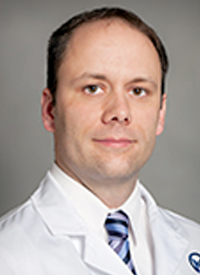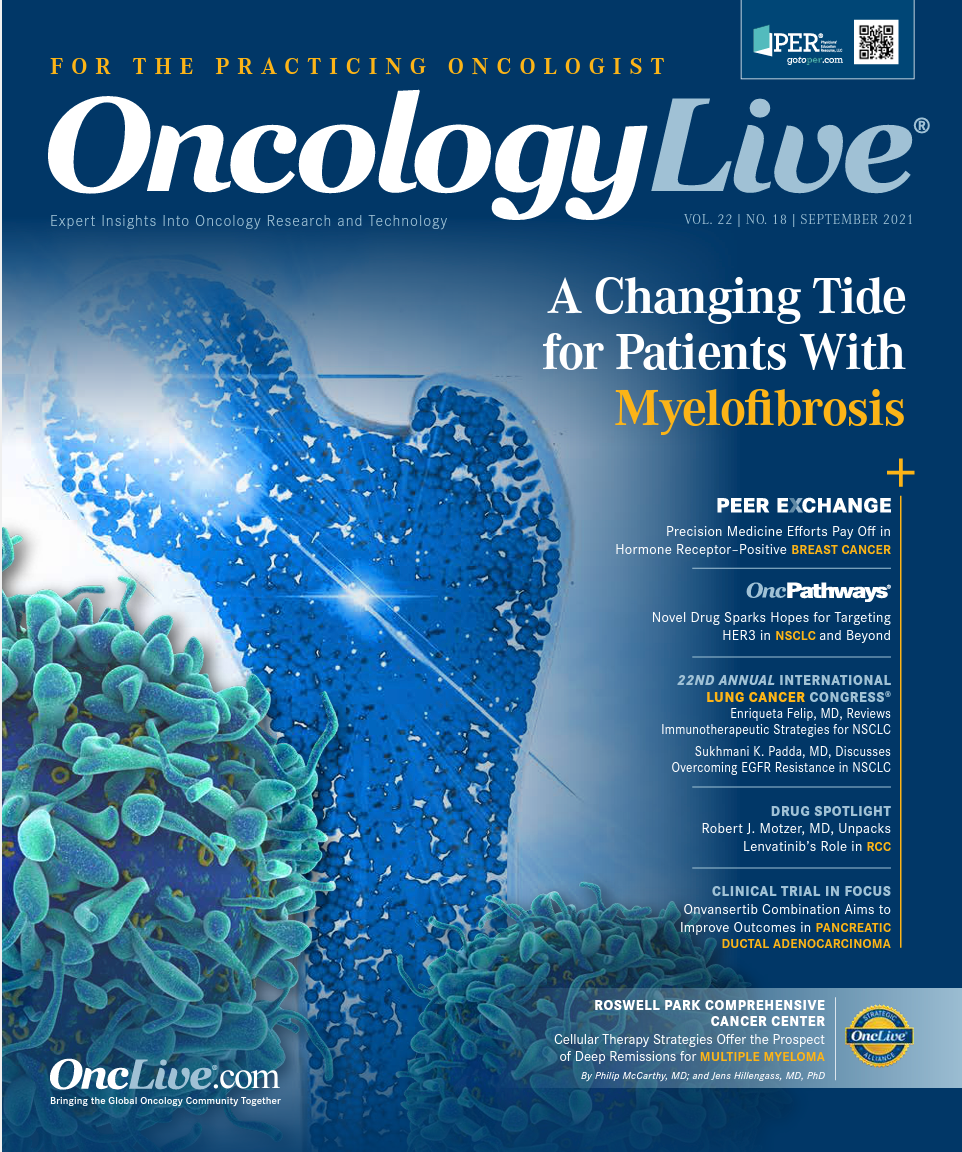Addressing AYA Cancer Requires a Tailored Approach to Practice
Investigators have expanded the scientific understanding of cancer in the adolescent young adult patient population over the past decade. However, unmet needs remain in establishing treatment standards, addressing unique survivorship challenges, and providing a framework for patients to reference as they navigate their cancer journey.
Damon Reed, MD

Investigators have expanded the scientific understanding of cancer in the adolescent young adult (AYA) patient population over the past decade. However, unmet needs remain in establishing treatment standards, addressing unique survivorship challenges, and providing a framework for patients to reference as they navigate their cancer journey.
The AYA group, defined as patients aged 15 to 39 years,1 does not fall neatly into either the pediatric or adult cancer category. This population has different psychosocial and fertility needs, and their outcomes are not always tracked with the other populations. Because the health care system is not built to perfectly accommodate this age group, improvements in outcomes have historically lagged.
In terms of AYA care, Damon Reed, MD, a medical oncologist and program leader of the Adolescent Young Adult Program at Moffitt Cancer Center in Tampa, Florida, said, “You don’t think of [patients who are] 20 to 30 years [old] walking through the door.” The reality, however, is that 125 patients younger than 40 years walk into Moffitt Cancer Center every day, according to Reed, and oncologists see, on average, 6 new patients in this population daily.
Reed also serves as the interim chair of the Department of Individualized Cancer Management and the clinical codirector of the Center of Excellence for Evolutionary Therapy at Moffitt.
Cancer in the AYA Population
This AYA age was defined by the National Cancer Institute (NCI) nearly 2 decades ago when researchers investigated outcomes data for different age groups.1 Data have shown that mortality rates changed little with this population from 1975 to 2000, with the least amount of improvement demonstrated in the 20 to 40 age range (< –1.5%).2
From 2009 to 2018, mortality rates decreased 0.8% annually, according to the NCI Surveillance, Epidemiology, and End Results Program.3 Further, the data show that AYAs will account for 4.6% of all new cancer cases in 2021, with 88,260 cases new cases predicted annually.3 Common cancer types in this age group are thyroid (16%), breast (15%), melanoma (8%), testicular (8%), and other (53%). In 2021, an estimated 9130 AYA patients will die from cancer, comprising 1.5% of all cancer deaths for any age.
A study of registry data from 1973 to 2015 showed that the diagnosis rate of cancer in AYA patients increased by 29.6% in this period (from 57 to 74 per 100,000). Results showed that among 497,452 patients, the most common cancer types in men were testicular, melanoma, and non-Hodgkin lymphoma, and in women were breast, thyroid, cervical, and uterine cancers. The authors noted that because patients were often grouped together with pediatric or adult patients for research studies, it was important to under-stand how this population was distinct to develop appropriate care guidelines for the rising case numbers.
How Oncology Centers Are Addressing AYA Patients
Several factors make cancer in the AYA population a different experience than adult or pediatric cancer (Table1,4).
Table. Considerations for AYA Cancer Care1,4

Fertility is the easiest difference to explain to others, Reed said. For many AYA patients, the time of their diagnosis is their first experience with the health care system, outside of routine care. Advocating for yourself in a health care system can be difficult, Reed noted, adding that a diagnosis of cancer may also be coupled with anxiety and depression. The establishment of AYA cancer programs and services are one way in which providers can anticipate and potentially alleviate the avalanche of sudden needs without a patient needing to submit a request.
Cathy Eng, MD, the David H. Johnson Chair in Surgical and Medical Oncology at Vanderbilt-Ingram Cancer Center in Nashville, Tennessee, said that although the average patient with colorectal cancer is 65 years or older and tends to be mostly or semi-retired with an established family and/or career, she also sees patients who are much younger and can have complicated cases.
Cathy Eng, MD

“Many of these young adult patients present with stage IV disease, as they may delay seeking care until long after noticing initial symptoms,” Eng said. “Young adult patients are often embarking on new chapters in their lives, [such as] graduating college and starting new jobs or families. Job security, health insurance insecurity, and fertility concerns are top of mind in this group.”
Eng, who also serves as professor of medicine, codirector of gastrointestinal oncology, and coleader of the Gastrointestinal Cancer Research Program at Vanderbilt-Ingram Cancer Center, was told by one young adult patient that when he was in the waiting room before treatment, he could feel people staring at him—so he started wearing aviator glasses to deflect the looks. “I always remember that,” she said.
Eng wanted to start a young adult program for patients with cancer and finally got her chance after joining Vanderbilt; she helped establish the Vanderbilt-Ingram Cancer Center Young Adult Program in 2020.
“How can I help these young patients from every possible perspective so they can go through their treatment feeling they have additional support, not just from their oncologists, but their community?” Eng asked, adding that her initial plan was to serve patients with colorectal cancer, but it expanded across tumor types after her colleagues wanted their patients to have support too.
This Vanderbilt-Ingram program offers patients consultations with people specializing in fertility, spiritual/religious needs, social work, and exercise and fitness programs. The program leverages both community and institutional support. For example, a former patient with lymphoma creates individual exercise programs and gives 12 weeks of free personal training to young adult patients seeking cancer treatment in Tennessee.
The clinical staff also talks with patients about their treatment objectives, as well as the financial implications of a cancer diagnosis. “Egg preservation is not necessarily covered by insurance companies,” Eng said, and younger patients may not have the resources for that. Patients fear the financial insecurity that can result from receiving a diagnosis because some are underinsured and may have job security issues due to treatment demands.
“All those things need to be discussed,” Eng said.
Reed and other clinicians at Moffitt launched a program for AYA patients in 2011.
"When we started the program, our patients felt they were the only ones [in their age group],” Reed said. Despite securing initial funding, the monies were not allocated to help the patients directly because investors wanted to see the funds go toward research. “In my gut, I thought that was important, but the bigger need was for patients to feel less alone,” Reed said.
Moffit leaders decided to ask AYA patients what they wanted. “AYA patients hate support groups,” Reed noted, so they changed the name and organized a meetup. Social workers led guided discussions with patients and discovered that some patients were worried about their family members while others wanted more information about their cancer and treatment.
The mission of Moffitt’s AYA program is to improve the cancer care experience from diagnosis to survivorship. Ways in which the program addresses the long-term effects for this patient population include providing access to resources that will help them manage the emotional toll of cancer, helping them navigate access to cutting-edge clinical trials, hosting social events, and supporting advocacy efforts. Patients also have access to care providers to discuss fertility risks and options, as well as funding options, some of which are provided by Moffitt to offset sperm banking and egg retrieval. The program provides new patients with information and a user-friendly website, an on-site dedicated meeting space, and meetups for patients’ spouses or parents.
The NCI recommends that AYA patients with cancer be treated within an AYA oncology program. However, according to results of a survey in which 53 respondents from NCI-designated cancer centers participated, only half report having a dedicated AYA program.5 Of these, 70% of programs were started within the past 5 years. Only 4% of programs offer dedicated in-patient space, and 30% of the centers provide AYA-specific training to their staff members.
Twenty-one respondents were from community practices; of these, approximately 60% noted that they have an AYA program, and nearly 15% reported that they do not currently have one but plan to develop one. Of those surveyed, 62% said they provided good/excellent AYA care overall, but only 19% considered their AYA staff education good/ excellent. Fertility, survivorship, and psychological services were all reported at 52%.
These programs, however, cost money, something that smaller practices may not have access to. Larger institutions, such as Moffitt, dedicate approximately 80% of their AYA philanthropy funding to research, which is collecting data on patient-reported outcomes, toxicity, and pain at various treatment and post-treatment points; findings will determine which unmet AYA needs to address going forward. The remaining funding pays for events, dedicated building space, and patient programs. Although Reed said he does not know if the program draws patients to Moffitt, those coming for a second opinion “can’t believe it exists.”
Eng noted that the Vanderbilt-Ingram Young Adult Program funding comes from grants.

Moving Forward With AYA Care
Reed said he is surprised AYA cancer has not had its breakout moment. Although not all cancer centers can have dedicated programs, he encourages small efforts, which will help this population immensely. “Keep moving toward it,” he said. An easy step is training. Moffitt trains every new staff member about AYA issues, and if nothing else, these patients get a smile when they walk in the door, Reed noted. Not every patient will want the services offered, but the services make a big difference to those who do. Reed said they used to send an email out to 2000 patients for a program, 35 would RSVP, and 12 would show up. “I wondered why more people didn’t come. But at the end of the event, 8 people wouldn’t leave,” he said, noting how small victories add up. “We realized we changed 8 people’s lives.”
References
- Scott AR, Stoltzfus KC, Tchelebi LT, et al. Trends in cancer incidence in US adolescents and young adults, 1973-2015. JAMA Netw Open. 2020;3(12):e2027738. doi:10.1001/ jamanetworkopen.2020.27738
- Bleyer A, O’Leary M, Barr R, Ries LAG, eds. Cancer Epidemiology in Older Adolescents and Young Adults 15 to 29 Years of Age, Including SEER Incidence and Survival: 1975-2000. National Cancer Institute; 2006. NIH publication 06-5767. Accessed August 31, 2021. https://bit.ly/3yJqo5N
- Cancer stat facts: cancer among adolescents and young adults (AYAs) (ages 15-39). National Institutes of Health. Accessed August 31, 2021. https://bit.ly/3kRgREE
- Ferrari A, Stark D, Peccatori FA, et al. Adolescents and young adults (AYA) with cancer: a position paper from the AYA Working Group of the European Society for Medical Oncology (ESMO) and the European Society for Paediatric Oncology (SIOPE). ESMO Open. 2021;6(2):100096. doi:10.1016/j.esmoop.2021.100096
- Daunov K, Daunov M, Noskoff K, et al. Are National Cancer Institute cancer centers (NCI-CC) providing adolescents and young adults (AYA) with cancer focused clinical services? a national survey. J Clin Oncol. 2021;39(suppl 15):1534. doi:10.1200/JCO.2021.39.15_suppl.1534




